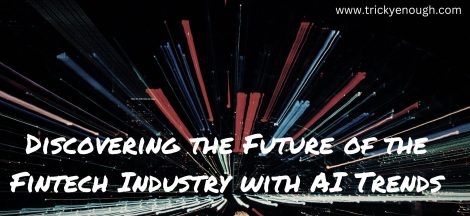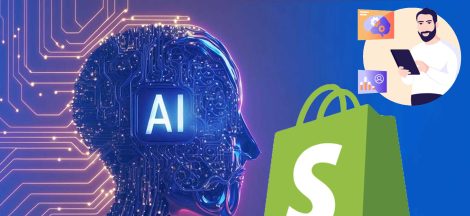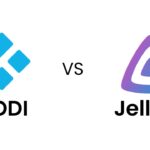Certainly, the advent of artificial intelligence (AI) has blown away people with amazement. Of course, data science works at the back end to power AI. One of its most striking applications is OCR, which makes data conversion easier, quicker, and better.
OCR stands for Optical Character Recognition. Together with artificial intelligence, this data conversion technology is capable of digitizing paper-bound documents in no matter of time.
This post will help you understand what it is and how it helps in the speedy conversion of any document.
What is OCR Technology?
Before the 80s or 90s, global companies used to have a colossal dataset in paper-bound files. Now when AI is in every walk of life, digitizing those printed texts has become a norm. Companies are interested in electronically processing things like orders, purchases, analysis, reporting, etc.
Thanks to AI-driven OCR! This evolution has evolved many OCR companies in the USA like Ocrolus, Instabase, and many others. It is actually a key enabler of this conversion. The types, of writing, and printed text can be easily transformed into editable digitized versions through this technological innovation. There are actually two main technologies making it possible, which are machine learning and computer vision algorithms. With these algorithms, it’s like a walkover to analyze the layout of any document. This is the beginning phase of document conversion, which is typically called pre-processing. It helps in determining which information should be scanned and digitized.
Its scanning phase involves normalizing data, cleaning up lines or boxes, and fixing angular deviations. Upon getting all-clear signals, this technology starts extracting text from the scanned copies. In the beginning, its algorithms were directed to use light and a photocell. They help compare any inked symbol, and characters against a stored inked symbol. As it advances, the algorithms decompose that symbol into vectorized characters. After that, clustering algorithms come into play. They group the nearest match between the vector images and stored symbols.
Let’s get a bit deeper into it in the next section.
OCR Works- How?
Here is the entire cycle of automated document processing with OCR.
It goes on this way:
Step 1: In this step, the scanned data are collected from databases. The system called a Robotic Process Automated Bot, an email, or other sources can be used for gathering data.
Step 2: Herein, the pre-processing begins. It helps in smoothing the edges, improving contrast, fixing angular deviations, and more things.
Step 3: Like a human brain, an algorithm-run neural system automatically classifies documents for sorting as per their types. For instance, bank statements or transactions are grouped together. If there are invoices from different vendors, the subcategories are created accordingly by determining text content and image patterns.
Step 4: Furthermore, the automatic neural system defines document types and then, chooses the accurate documentation for the next-level processing. This is how the fields are recognized.
Step 5: Finally, the structured or semi-structured content is scraped from the document. Later on, it is exported to the directed location on a system.
There is an optional step, wherein human verification can be executed for the benchmark quality. This step is run before exporting the datasets to the destination system. The final result of this process appears in a defined file, which can be an XML, JSON, CSV, XLS/XLSX, TXT, or DBF file.
How is the Customer Purchase Order Data Extracted?
It requires a repository where all customer purchase orders are gathered. Certainly, it has a registry where all customer purchase orders’ tags, search options, listings, and insights are input for deep analytics. With this pooling of information regarding purchase orders, various companies can easily discover and access any required purchase order at any time.
This is simply because it carries all purchase orders from customers. Although the templates may vary from customer to customer, this technology can convert them all into digitized documents. So, it’s no more a battle to extract a specific piece of information from various purchase orders.
The sweet spot of this innovative technology is that the data extraction process won’t start from scratch if the purchase order template is redefined. Simply put, the conversion experts won’t have to define and train algorithms from the beginning because of those changes in the template designs of purchase orders. Its neural system is smart enough to extract accurate data from any design for both, the new layout and the older version of that purchase order.
Let’s get through how it happens technically.
As the user uploads his purchase order in the repository or sends it to an inbox online, the connected Customer Purchase Order Repository tool gets the file and saves it in a secure location. Here, the actual processing takes place. The OCR tool closely monitors the storage if any new file is uploaded and then, straightaway selects it for the extraction process.
The next step is to automatically identify the name of the sender or customer. Accordingly, the OCR tool scrapes the information as per trained models. Once the scraping is over internally, the next-level algorithms send that extracted piece of information in the form of a defined file. TXT or XLS.
This is how the extraction part takes place. Now, the tool sends that captured data as a defined file format to the repository where all purchase orders are saved. For this, the API of that repository is contacted. Once done, the data are updated there.
In case you need to add any condition, data validation is applied. The rules are defined to configure on the OCR tool. The validation expert tests it on a few samples and once everything seems fine, the data are sent to the Customer Purchase Order Repository application.
This technology shows incredible improvement in data extraction and speedy task. The team gets more accurate and timely results for making better decisions.
Advantages of OCR
There are multiple benefits of this advanced technology. It can extensively reduce human efforts in physically extracting information from various documents or files. Sometimes, the PDFs or images seem hard to search for a specific piece of information. With the launch of this technology, the risk of human errors turns down.
This incredible technology ensures that the documents become searchable. Above all, you ensure the privacy of sensitive details by keeping those records in a central digital data lake or warehouse.






 Kodi vs. Jellyfin — Which One Should You Go For?
Kodi vs. Jellyfin — Which One Should You Go For?